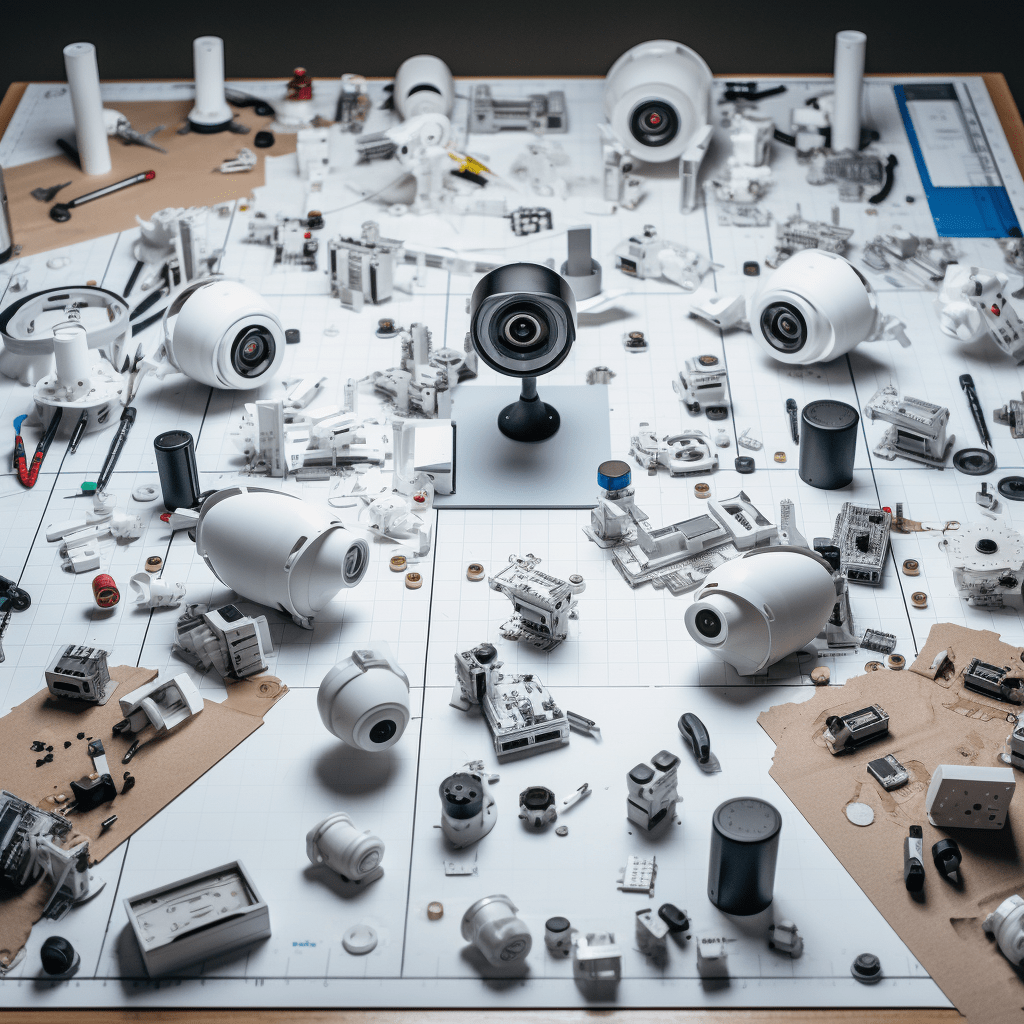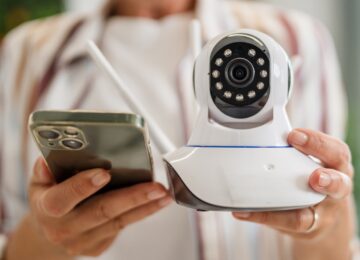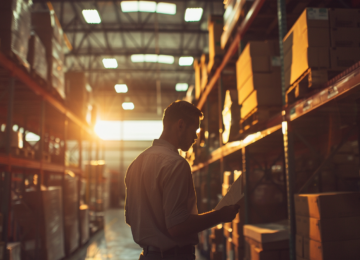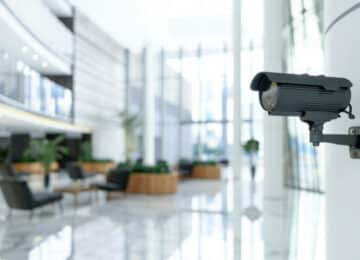What’s the focal length of a surveillance camera?

Wide-angle, 300 mm, telephoto lens… All of these lenses are determined by their focal length, which is the element that defines the field of vision, the depth of field, and the perception of distance. This is the case for the cameras you use to take photos, but also for video systems, namely video surveillance cameras. Discover the importance of the focal length of a video security system.
So, what is the focal length?
The focal length, also called the focal distance, is the distance between the sensor of a camera (photo or video) and the focus image. In other words, the focal length allows for the definition of a visual field and the elements found inside this frame. Depending on the size of the focal length, the angle of the images can appear to be wider or narrower. The focal length will impact the cameras’ capacities. This means that it determines the importance of calibrating a surveillance camera, as choosing the right angle is essential to capturing high-quality images.
From a technical perspective, the focal length measures the light convergence or divergence power of an optical system. A converging lens has a positive focal length, whereas a diverging lens will have a negative focal length.
The notion of focal length therefore goes hand-in-hand with a lens, or with a concave or convex mirror.
The different types of focal lengths
Whilst choosing the positioning of video surveillance cameras can be based on intuition (at the entrance of a building, in a parking lot, etc.), the choice of focal length isn’t always as straightforward. Expressed in millimeters, the focal length represents the distance between the sensor, i.e., the camera, and the subject filmed. It's this focal length that will determine the area covered by the surveillance system. According to the focal length, the depth of field will be greater or smaller.
Short focal lengths
A short focal length, of around 2 mm, will give the camera a wide angle. The camera will be able to capture short-distance main planes, covering distances of approximately 6 meters. As for the frame, it will be approximately 14 meters in width. It’s generally this type of focal length that will be used in a video surveillance system, precisely because it allows for a large visual space to be filmed.
Medium focal lengths
A medium focal length allows you to balance out the ratio between the shot distance and the frame width. This type of focal length corresponds to a human-eye view. The zone captured is at a moderate distance from the video device:
A focal length of 2.8 mm will capture images at a distance of 8 meters, in a field of vision with a width of 14 meters;
A focal length of 6 mm will capture images at a distance of 18 meters, in a field of vision with a width of 14 meters.
Long focal lengths
The longer a camera’s focal length, the narrower its angle will be. For example, a focal length of 12 mm will capture images at a distance of 24 meters, in a field of vision with a width of 10 meters. So, you’ll be able to see further but you’ll see fewer elements. Watch out: Be careful not to mix up focal length and zoom. Zoom is a feature found on all cameras. The focal length is fixed, and it doesn't let you change the equipment’s field of vision.
Which focal length do you need for your video surveillance cameras?
The choice of focal length will depend on what you want from your video surveillance system. For a garden, a shorter focal length will be best as the area to monitor is vast. For a store entrance, a longer focal length will be better suited as the space to monitor is more restricted.
Video surveillance cameras may have one of two types of lenses: A fixed lens or a varifocal lens.
Fixed lenses
In most cases, surveillance cameras are fitted with a fixed lens. In concrete terms, this means that once the device is installed, you won’t be able to change the view angle, which will always be the same. This is why it’s important to clearly define the location where the camera(s) will be positioned, otherwise you may need to relocate it. As we’ve mentioned above, surveillance cameras generally have a short focal length.
Varifocal lenses
This type of lens offers more flexibility for the device, as it allows for 2 different focal lengths to be selected according to the desired view angle. This way, the camera doesn’t need to be moved. All it takes is a simple click to change the view angle for the main plane, either reducing it or expanding it.
AI-driven video surveillance
Here at vision, we’re working day in and day out to constantly improve video surveillance systems. That's why we’ve developed a revolutionary video surveillance software that can effectively secure any type of business. As it’s been seen time and time again that simply installing high-quality cameras is not always enough, we’ve set out to become specialists in AI-driven video surveillance. Amongst many other benefits, this technology enables the detection of shoplifting actions automatically and in real time. This system, which is particularly suited to video surveillance for stores, provides a practical solution for those looking to prevent shoplifting.
Got a project in mind? Any questions? Get in touch with us now to look at your options for installing an AI-driven video security system for your business.
The most popular
Related news
Discover what Veesion can do for you. Do you have one or more stores?
Our team will contact you within 48 hours





